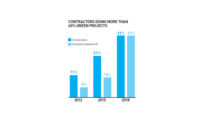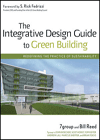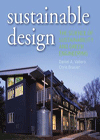New Research Reveals the Safety Hazards of Green Building
During the past several years, the green building trend has soared, with an increase in government incentives and availability of affordable supplies driving a huge growth of U.S. Green Building Council LEED-certified buildings. With the LEED program ambitiously hoping to certify one million commercial buildings by 2020, it’s no surprise that this trend has come under some scrutiny. And while most great rewards often have a price, in this case it could be at the expense of the safety of construction workers on the job (see related sidebar at the end of this story).
When Matthew Hallowell, assistant professor in the Civil, Environmental and Architectural Engineering Department at the University of Colorado Boulder, became aware of a study that found evidence of a nearly 50% increase of injury rate had occurred in LEED-certified projects over traditional construction, he found himself wondering about the cause.
“That original work was the catalyst,” Hallowell says. “What we proposed to do was a comprehensive analysis where we looked credit by credit at the construction and design for this type of building and how that compared to what we traditionally do. LEED is growing very quickly, but prior to this, no one had paid much attention to the safety involved.”
The team’s greatest challenge in conducting the study, titled “Identification of Safety Risks for High-Performance Sustainable Construction Projects,” was gathering empirical data rather than opinion-based anecdotes. To do this, Hallowell says the student researcher conducted site visits, observed construction processes, obtained and analyzed project documentation and reviewed job-hazard analyses and injury reports—in addition to conducting interviews at multiple organizational levels.
With the information gathered, Hallowell and his team of researchers were able to identify 14 LEED credentials that may create heightened risks to construction workers. Most notable risks include a perceived 41% higher risk associated with installing sustainable roofing, a perceived 37% increase in risk from installing PV panels for on-site renewable energy, a perceived 36% additional risk of cuts, abrasions and lacerations from construction waste management and perceived 32% heightened risk of falls from installing skylights and atriums to meet the daylight and views credit.
“I was very surprised when I read the conclusions,” says Brendan Owens, vice president of LEED Technical Development at USGBC. “LEED buildings are substantively different than non-LEED buildings and while there are risks in all construction, we did not expect green-building construction would have higher incidence of accidents. I don’t know that a lot of people would have held an opinion that was different than mine prior to this report.”
The fact that the LEED rating system had yet to identify how to improve workers’ safety was something the USGBC had already been working closely with the National Institute of Occupational Safety and Health (NIOSH) for several months to evaluate.
“We understood there were opportunities to learn from the safety community and help take their expertise to understand where we could create LEED credit language that inherently values the mitigation of risks to the constructors,” says Owens. “Still, it’s helpful and important that people are studying these issues and identifying opportunities to get better.”
One question that arose from these studies was whether a building could truly be considered sustainable if the health and safety of its constructors were at risk. “Worker safety and health must be considered as an integral component of sustainable building design, construction and operation,” says Hallowell. He reasons that adding LEED credentials based on safety measures would be beneficial to maintaining worker safety.
But Owens notes that rather than putting in place a credential that recognizes regulations contractors should already be complying with, LEED officials are looking to evolve the rating system as a whole.
Should the LEED framework be held responsible for safety issues? No, LEED is simply a tool used to measure and verify green building performance. There are other organizations that are...
Do we have a concern about new green building systems and the safety of our workers at Sellen Construction? Absolutely! Any time you initiate a new construction practice or building system, it introduces tradespeople to new situations and there is the potential for a higher risk of incident. For example, with the increased use of vegetated roofing systems, landscapers (not typically expected to work on roofs) are being asked to install roofing systems which in turn, creates the need for heightened safety protocols and worker education.
Sellen Sustainability, the national training and consulting arm of Sellen Construction, is currently working on a Safety & Health Investment Project (SHIP) grant through Renton Technical Colleges Construction Center of Excellence to be used across Washington State. Funded by the Department of Labor & Industry, the SHIP grant will result in the creation of an industry-specific instructional video and an 8 hour course focused on training safety professionals. The goal is to help them acquire a core understanding of sustainable construction practices and green building systems in order to develop appropriate safety protocols to reduce incident rates associated with hazards such as falling, being struck by an object and overexertion.
Our training does not use a LEED credit specific approach; rather, in developing curriculum, our focus has been on new green building systems and practices that have safety implications as these issues also often occur on non-LEED projects and most builders do not think about construction and or safety from a LEED credit perspective. Our curriculum also includes a section on how LEED and basic green building practices actually protect workers. For example, we have a company-wide approach to indoor air quality management that significantly reduces workers exposure to potential trip hazards and known toxins through sustainable housekeeping, source control, pathway interruption, and the use of low-emitting adhesives, paints and sealants.
Safety statistics are an important first step to help raise awareness about the importance of safety professional training related to new green building practices. As such, we are focused on creating behavior change to reduce injuries, while maintaining the integrity of the green building industry.
Yancy Wright
Director, Sellen Sustainability







